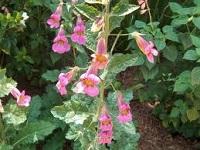Fu Fang Yi Mu Cao Gao
Angelica sinensis (当归)
|
he dried root of Angelica sinensis is commonly known as Chinese angelica (simplified Chinese: 当归; traditional Chinese: 當歸; pinyin: dāngguī; Pe̍h-ōe-jī: tong-kui) and is widely used in Chinese traditional medicine for gynecological ailments, fatigue, mild anemia and high blood pressure.[citation needed] The plant's phytochemicals consist of coumarins, phytosterols, polysaccharides, ferulate, and flavonoids. It has antioxidant activity.
It is often used in premenstrual syndrome formulas as well as menopausal formulas. However, this herb is not recommended during pregnancy due to possible hormonal, anticoagulant, and antiplatelet properties.[citation needed] Animal research has noted conflicting effects on the uterus, with reports of both stimulation and relaxation.[citation needed] Dong quai is traditionally viewed as increasing the risk of miscarriage.
【拉丁文名】Radix Angelicae Sinensis
【英文名】Chinese Angelica
【拉丁植物动物矿物名】Angelica sinensis (Oliv.) Diels
【药材基源】为伞形科植物当归的根。
【科属分类】伞形科
【性味】味甘;辛;苦;性温
【归经】归肝;心;脾经
【功效分类】补血药;调经药;止痛药
【功效】补血;活血;调经止痛;润燥滑肠
【主治】血虚诸证;月经不调;经闭;痛经;症瘕结聚;崩漏;虚寒腹痛;痿痹;肌肤麻木;肠燥便难;赤痢后重;痈疽疮疡;跌扑损伤。
【用法用量】内服:煎汤,6-12克;或入丸、散;或浸酒;或敷膏。
【用药禁忌】湿阻中满及大便溏泄者慎服。
|
Rehmannia (地黄)
|
  | Rehmannia is a genus of six species of flowering plants in the order Lamiales, endemic to China.
The genus was included in the family Scrophulariaceae or Gesneriaceae in some older classifications. The current placement of the genus is in neither Scrophulariaceae s.s. nor Plantaginaceae s.l. (to which many other former Scrophulariaceae have been transferred). Earlier molecular studies suggested that its closest relatives were the genera Lancea and Mazus (Oxelman et al., 2005), which have been included in Phrymaceae (Beardsley & Olmstead, 2002). Subsequently it was found (Xie et al., 2009) that Rehmannia and Triaenophora are jointly the sister group to Lindenbergia and the parasitic Orobanchaceae.
Sometimes known as Chinese Foxglove due to its superficial resemblance to the genus Digitalis, the species of Rehmannia are perennial herbs. The plants have large flowers and are grown as ornamental garden plants in Europe and North America, and are used medicinally in Asia.
Known as dìhuáng (地黄) or gān dìhuáng (干地黄) in Chinese, R. glutinosa is used as a medicinal herb for arthritic conditions within Chinese traditional formulations.
Rehmannia contains the vitamins A, B, C, and D, as well as other compounds, such as an iridoid glycoside, catalpol, that has been shown to exert protective effects on dopaminergic neurons in aged rats to help inhibit microglial activation, thereby reducing the production of pro-inflammatory factors.
The name "Rehmannia" has also been given to a genus of Jurassic ammonites belonging to the Reineckeidae family.
|
|